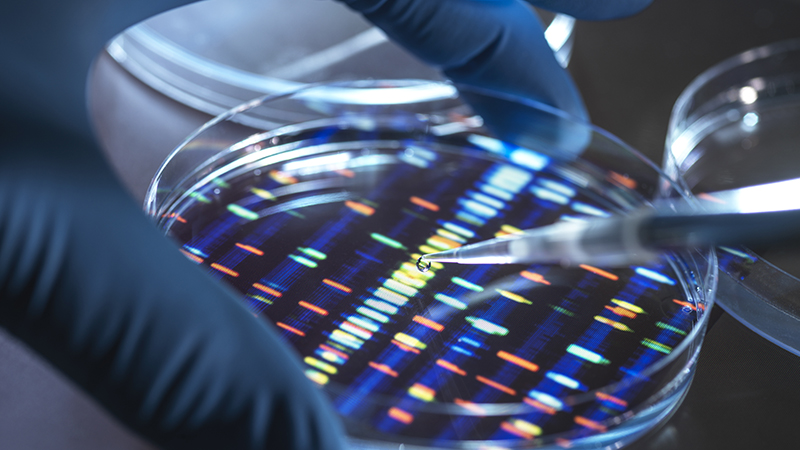Is This the Key to Controlling Lupus?
Northwestern Medicine Scientists Discover Driver of the Disease
Updated January 2025
This article was originally published in the Northwestern University Feinberg School of Medicine News Center. It has been edited for the HealthBeat audience.
Systemic lupus erythematosus (SLE or lupus), a chronic autoimmune disease that causes inflammation and pain in your body, affects more than 1.5 million people in the United States. With lupus, your immune system attacks healthy cells and tissues. Scientists at Northwestern Medicine have discovered an imbalance of a molecule in the blood that drives the harmful immune response in lupus. Restoring balance of this molecule in the blood may potentially cure the disease.
By identifying a cause for this disease, we have found a potential cure.— Jaehyuk Choi, MD, PhD
Until this study, the causes of lupus were unclear. The disease can cause life-threatening damage to your skin, joints and blood vessels as well as internal organs like your kidneys and heart. Because lupus affects many parts of the body, its impact on quality of life is significant . Existing treatments, which typically involve medication that stops your immune system from functioning (immunosuppression), can fail to control the disease and have an unintended side effect — reduction in the immune system’s ability to fight infections.
“Up until this point, most therapies for lupus are blunt instruments. It’s broad immunosuppression,” says study co-author Jaehyuk Choi, MD, PhD, former associate professor of Dermatology at Northwestern University Feinberg School of Medicine. “By identifying a cause for this disease, we have found an approach to find a potential cure that will not have the side effects of current therapies.”
Flipping Cells’ Identity
By studying patients with lupus, investigators found imbalanced chemicals in the blood that cause a rise of T-cells (a type of white blood cell that is part of the immune system), which promote the production of antibodies. By restoring balance of a molecule called Aryl hydrocarbon receptor (AhR) in patients' blood, Dr. Choi believes it is possible to reprogram disease-causing cells into benign tissue-repairing cells, potentially curing lupus. “It’s targeting the T-cells causing lupus and flipping their identity from bad to good,” he explains.
Dr. Choi and his colleagues next want to expand their efforts into developing new treatments for people with lupus. Learn more about this breakthrough lupus discovery in a podcast featuring Dr. Choi.
Common Symptoms of Lupus and Risk Factors
Everyone with lupus will experience it differently, but common symptoms include:
- Fatigue: Feeling tired most of the time.
- Joint pain and swelling: Often affecting hands, wrists and knees.
- Skin rashes: The classic butterfly rash on your face, but also other skin issues.
- Fever: Low-grade fever that comes and goes.
- Hair loss: Thinning hair or bald patches.
- Chest pain: When breathing deeply.
- Raynaud’s phenomenon: Fingers and toes turning white or blue in cold temperatures.
People with lupus typically have periods of time where symptoms worsen, called “lupus flares” or “flare-ups.”
While anyone can develop lupus, some groups have a heightened risk:
- Younger women between the ages of 15 and 44
- People who are African American, Asian American, Hispanic, Latino, Native American or Pacific Islander
- People who have a relative with lupus or other autoimmune disease
You can also develop drug-induced lupus, which is caused by a reaction to certain medications. These medications are commonly linked to this condition:
- Hydralazine, which is used to treat high blood pressure or hypertension
- Procainamide, which is used to treat irregular heart rhythms
- Quinidine, which is used to treat irregular heart rhythms
Drug-induced lupus symptoms usually appear three to six months after starting a medication and disappear within six months after the medication is stopped. If you have questions about your medications or your symptoms, contact your care team.





